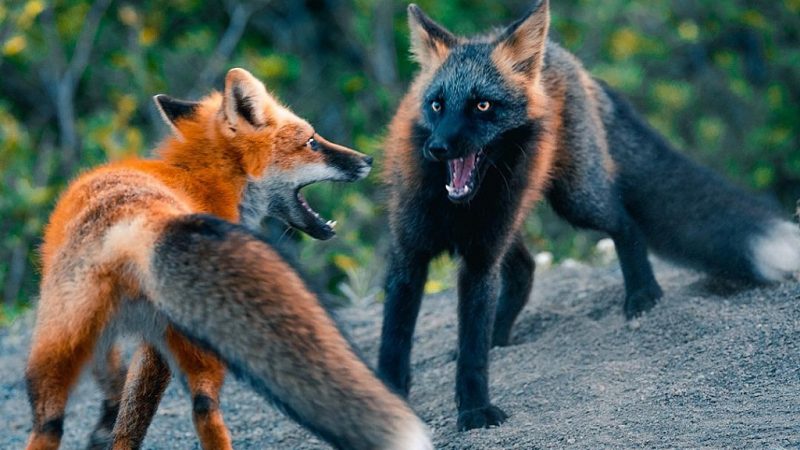Wilson’s Warbler (Cardellina pusilla) – Male and Female Variations
Wilson’s Warbler (Cardellina pusilla) is a small, vibrant songbird belonging to the New World warbler family. This delightful species is known for its striking appearance and cheerful songs, which make it a favorite among birdwatchers and nature enthusiasts alike. Let’s explore the differences between the male and female Wilson’s Warblers and learn more about these charming creatures.
The male Wilson’s Warbler boasts a stunning plumage, characterized by a bright yellow color that covers its entire body, including the head, back, wings, and underparts. Its face is adorned with a distinctive black cap that extends from its bill to the nape, encircling its eyes and giving the bird a charming appearance. These dark markings serve as a contrast against the vibrant yellow, making the male Wilson’s Warbler easily recognizable. This dapper little songbird is relatively small, measuring around 10 centimeters in length, making it a delightful sight to see in the wild.
While the female Wilson’s Warbler shares the same species, it exhibits a more subdued plumage compared to its male counterpart. Rather than the bright yellow of the male, the female’s coloration is a soft olive-green, providing better camouflage in the foliage while tending to its nests and foraging for insects. Like the male, the female also sports a touch of black on its crown, but the markings are less prominent and may not encircle the eyes entirely. The female Wilson’s Warbler shares the same petite size as the male, enabling them to navigate the dense vegetation with ease.
Wilson’s Warblers are migratory birds and are found in North America during the breeding season. They have an extensive range that spans across the western United States, Canada, and Alaska, as well as some parts of the eastern United States. During the winter, these birds migrate to Mexico and Central America, seeking warmer climates and abundant food sources.
Their preferred habitats include moist, dense undergrowth, and shrubby areas near streams, rivers, and wetlands. These locations provide ample insect prey and nesting sites for the birds. Wilson’s Warblers are also known to frequent wooded parks, gardens, and forest edges, making them relatively easy to spot for birdwatchers.
Both male and female Wilson’s Warblers are primarily insectivorous, feeding on a wide variety of insects such as beetles, caterpillars, flies, and spiders. They are known for their energetic foraging behaviors, constantly hopping from branch to branch and foliage to foliage in search of their next meal.
During the breeding season, male Wilson’s Warblers sing melodious and vibrant songs to attract mates and establish territories. Their songs are often described as high-pitched and musical, adding to the charm of these already delightful birds.
Wilson’s Warblers, both male and female, are fascinating and captivating songbirds that enrich the biodiversity of North America. Their distinct physical characteristics and behavior add to their allure, making them a treasured sight for birdwatchers and a vital part of the ecosystems they inhabit. Protecting their habitats and promoting conservation efforts is essential to ensure that future generations can continue to admire and appreciate these beautiful warblers in the wild.
Hits: 0










